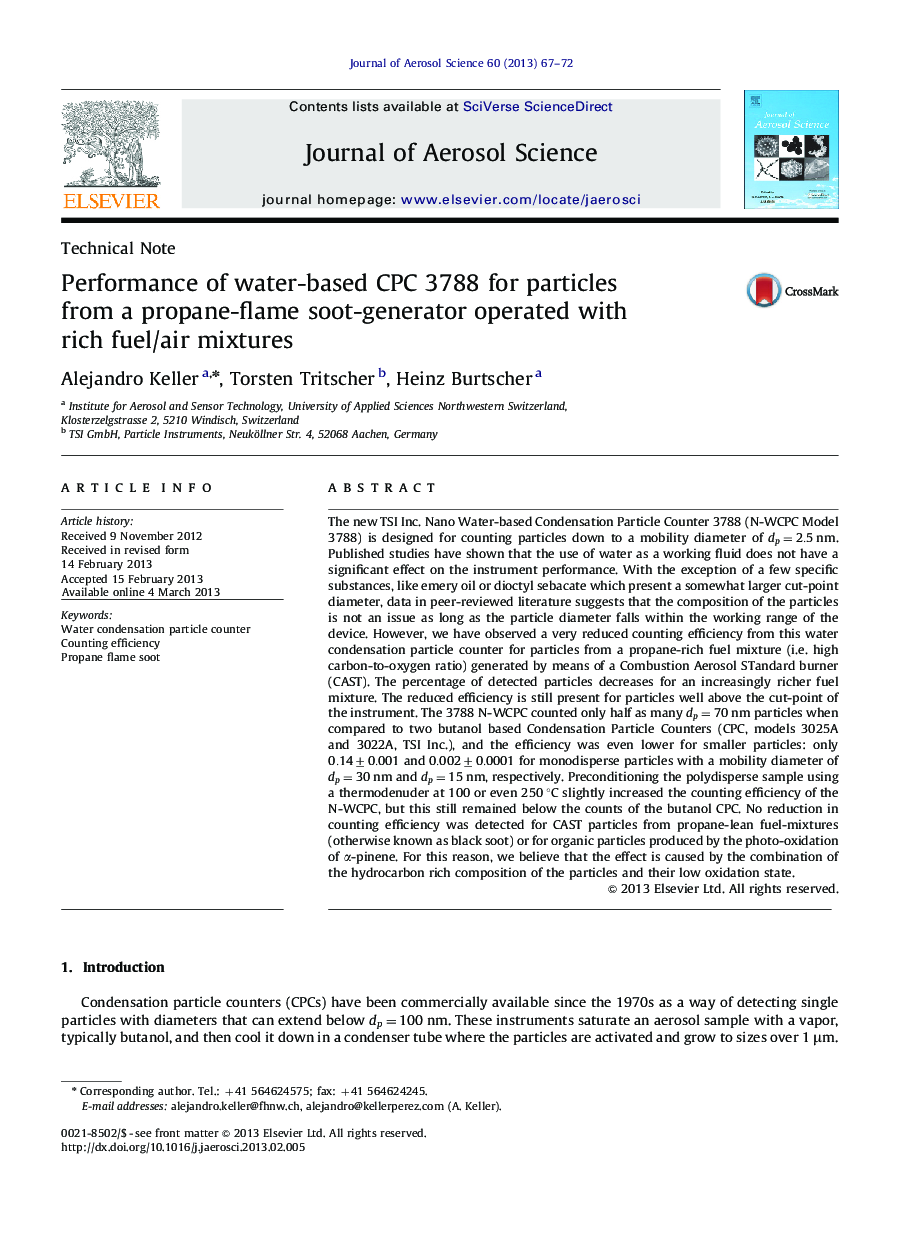| Article ID | Journal | Published Year | Pages | File Type |
|---|---|---|---|---|
| 4452449 | Journal of Aerosol Science | 2013 | 6 Pages |
The new TSI Inc. Nano Water-based Condensation Particle Counter 3788 (N-WCPC Model 3788) is designed for counting particles down to a mobility diameter of dp=2.5nm. Published studies have shown that the use of water as a working fluid does not have a significant effect on the instrument performance. With the exception of a few specific substances, like emery oil or dioctyl sebacate which present a somewhat larger cut-point diameter, data in peer-reviewed literature suggests that the composition of the particles is not an issue as long as the particle diameter falls within the working range of the device. However, we have observed a very reduced counting efficiency from this water condensation particle counter for particles from a propane-rich fuel mixture (i.e. high carbon-to-oxygen ratio) generated by means of a Combustion Aerosol STandard burner (CAST). The percentage of detected particles decreases for an increasingly richer fuel mixture. The reduced efficiency is still present for particles well above the cut-point of the instrument. The 3788 N-WCPC counted only half as many dp=70nm particles when compared to two butanol based Condensation Particle Counters (CPC, models 3025A and 3022A, TSI Inc.), and the efficiency was even lower for smaller particles: only 0.14±0.0010.14±0.001 and 0.002±0.00010.002±0.0001 for monodisperse particles with a mobility diameter of dp=30nm and dp=15nm, respectively. Preconditioning the polydisperse sample using a thermodenuder at 100 or even 250 °C slightly increased the counting efficiency of the N-WCPC, but this still remained below the counts of the butanol CPC. No reduction in counting efficiency was detected for CAST particles from propane-lean fuel-mixtures (otherwise known as black soot) or for organic particles produced by the photo-oxidation of α-pineneα-pinene. For this reason, we believe that the effect is caused by the combination of the hydrocarbon rich composition of the particles and their low oxidation state.
